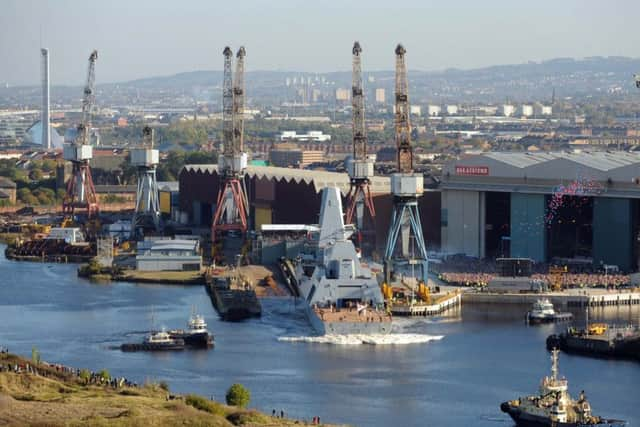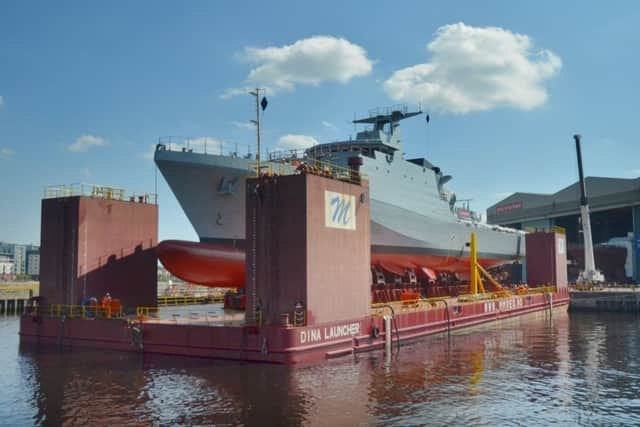Why dynamic launches became a thing of the past at Glasgow's shipyards
A bottle smashes, the crowd cheers, and the vessel begins its carefully planned descent down a slipway into the water.
But while a thrilling spectacle, it was a process fraught with possible dangers for both ships and the yard workers responsible for building them.
Advertisement
Hide AdAdvertisement
Hide AdDynamic launches, as they are known in the industry, have become a thing of the past in Glasgow. HMS Duncan was the last example of its kind.


The next generation of naval craft built in the city by BAE at its two yards on the Clyde are instead floated out.
It’s a time consuming process that lacks the drama of a dynamic launch. Yet it makes perfect sense for shipbuilders.
The Scotsman was allowed behind the scenes at the Govan yard this week to see exactly how float outs are planned.
It sounds like a deceptively straightforward process. Floating out allows ships to largely be assembled indoors - rather than on a slipway - before being placed on a heavy lift submersible barge.


The barge is then towed to a suitable location before the vessel is gradually set in the water - a process which can take five hours.
But such events take months of planning, as those working on HMS Trent understand.
This week, it will become the latest vessel to be floated out by BAE on the Clyde.
Advertisement
Hide AdAdvertisement
Hide AdThe Trent is the third offshore patrol vessel (OPV) to be built in Glasgow. While OPVs are relatively compact by naval standards at 2,000 tonnes, the larger Type 26 frigate being built at Govan will also be floated out upon completion.


“With every ship we are seeing improvements,” said Katie Callan, OPV programme director. “The Trent will be the third OPV to benefit from a modern, controlled approach where a barge lowers the ship into the water - bringing safety and quality improvements to what we do.
“OPVs are hugely important to our business and the ships have benefitted from the introduction of new, modernised processes and the latest technologies.
“In the past, the traditional ship launch would place the hull of the ship under great pressure and so temporary internal strengthening had to be installed while working to a weight restriction. The new process takes away these limitations and allows us to target a greater level of outfit. Trent will be close to 80% complete when she enters the water, which is a fantastic achievement.”


The ship will be officially named in Govan today before being floated at the nearby King George V dock.
Once in the water, the Trent will be towed for final fitting out at BAE’s Scotstoun yard.
In days gone by, launches were calculated by pen and paper and tidal charts. Now, every step of the floating out is pre-planned in a state-of-the-art visualisation suite - although waiting for the right tide is still required.
3D visualisation is commonplace in the automotive industry and was adopted by BAE four years ago.
Advertisement
Hide AdAdvertisement
Hide AdCallan added: “The use of our 3d visualisation technology with our suppliers was essential in ensuring they knew exactly how the process worked.
“Modelling the dock, the tugs, the barge and the ship gives us a completely accurate representation of the process, allowing us to take risk out of this important stage of the process.”
